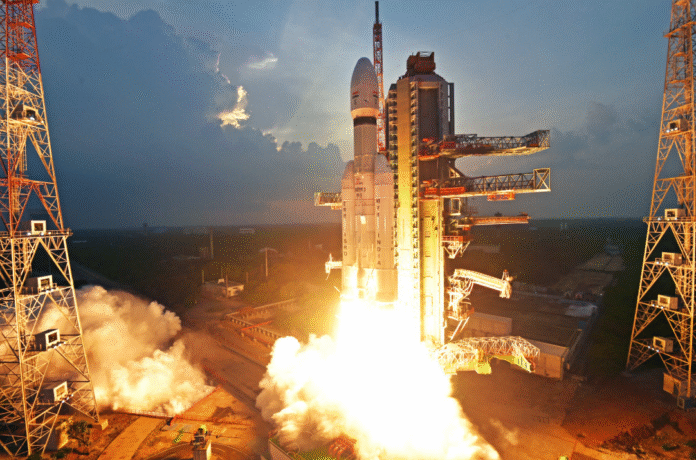Sriharikota
In a major boost to India’s defence and communication capabilities, the Indian Space Research Organisation (ISRO) successfully launched its heaviest communication satellite, CMS-03, on Sunday evening. Weighing 4,410 kilograms, the satellite was carried into space by the powerful LVM-3 rocket, also known as the “Bahubali” of Indian rockets, from the Satish Dhawan Space Centre in Sriharikota at 5:26 pm.
Just over sixteen minutes after liftoff, the spacecraft separated from the launch vehicle, marking another milestone in India’s growing expertise in heavy satellite launches. The CMS-03, also called GSAT-7R, will serve as a vital link in the Indian Navy’s expanding communication grid across the Indian Ocean.
Equipped with advanced multi-band payloads—covering C, extended C, and Ku bands—the satellite will enable secure, high-speed communication between naval warships, submarines, aircraft, and coastal command centers. Compared to its ageing predecessor GSAT-7 “Rukmini”, CMS-03 offers far greater coverage and bandwidth, ensuring real-time connectivity even in remote and contested maritime zones.
With its upgraded encryption systems and high-throughput transponders, CMS-03 will play a central role in network-centric naval operations, improving situational awareness, coordination, and data sharing. It will also enhance India’s Maritime Domain Awareness (MDA)—a crucial element for surveillance, threat detection, and operational readiness in vast oceanic territories.
The satellite’s coverage extends well beyond India’s borders, supporting both military and civilian operations such as disaster management, remote sensing, and telemedicine. Its deployment strengthens India’s self-reliance under the Atmanirbhar Bharat initiative, reducing dependence on foreign communication systems.
Over the next week, CMS-03 will use its onboard Liquid Apogee Motor (LAM) to gradually reach its final geostationary orbit. Once fully operational, within four to five weeks, it will cement India’s place as a leader in indigenous space technology and bolster communication security across the Indian Ocean region.



